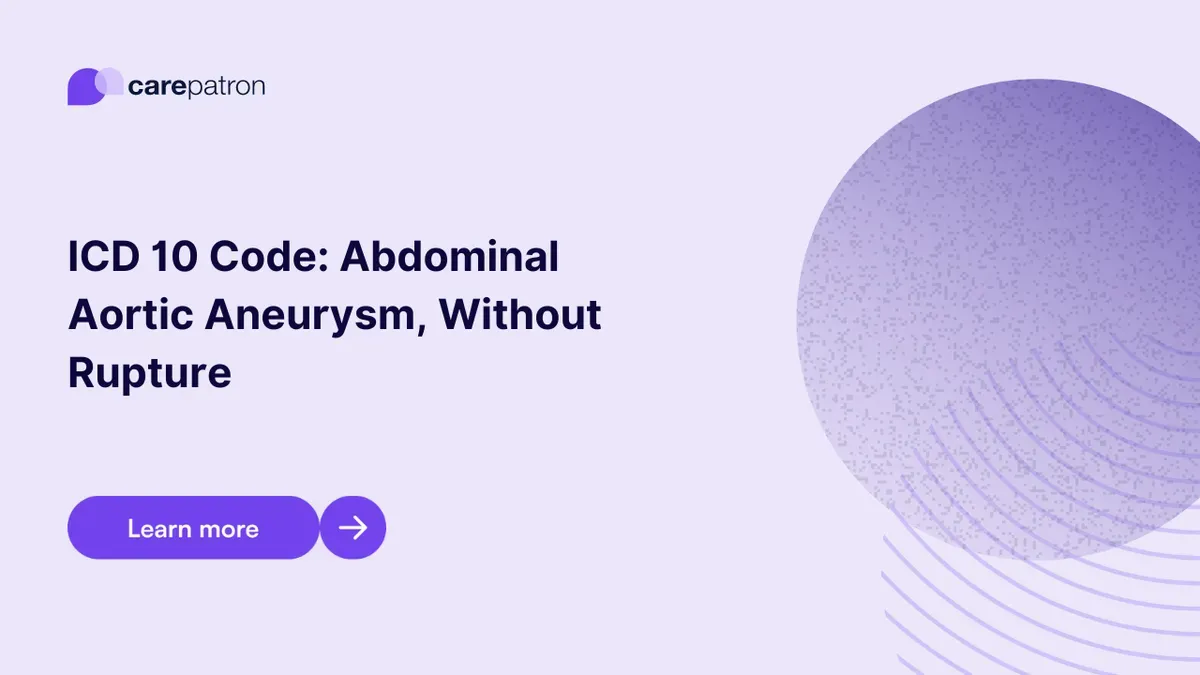
Abdominal Aortic Aneurysm, Without Rupture ICD-10-CM Codes
Delve into the 2023 ICD codes for Abdominal Aortic Aneurysm Without Rupture. Understand the codes, billability, and clinical relevance for this cardiovascular condition.
Use Code
Commonly asked questions
Many people with an abdominal aortic aneurysm don't experience symptoms. However, if they do, it might include a pulsating feeling near the navel, pain in the back or side, and stomach tenderness.
It's often diagnosed during an imaging test for another reason. Ultrasounds, CT scans, and MRIs are standard diagnostic tools.
The exact cause is unknown, but factors like tobacco use, high blood pressure, infection, and genetics might increase the risk.
EHR and practice management software
Get started for free
*No credit card required
Free
$0/usd
Unlimited clients
Telehealth
1GB of storage
Client portal text
Automated billing and online payments
